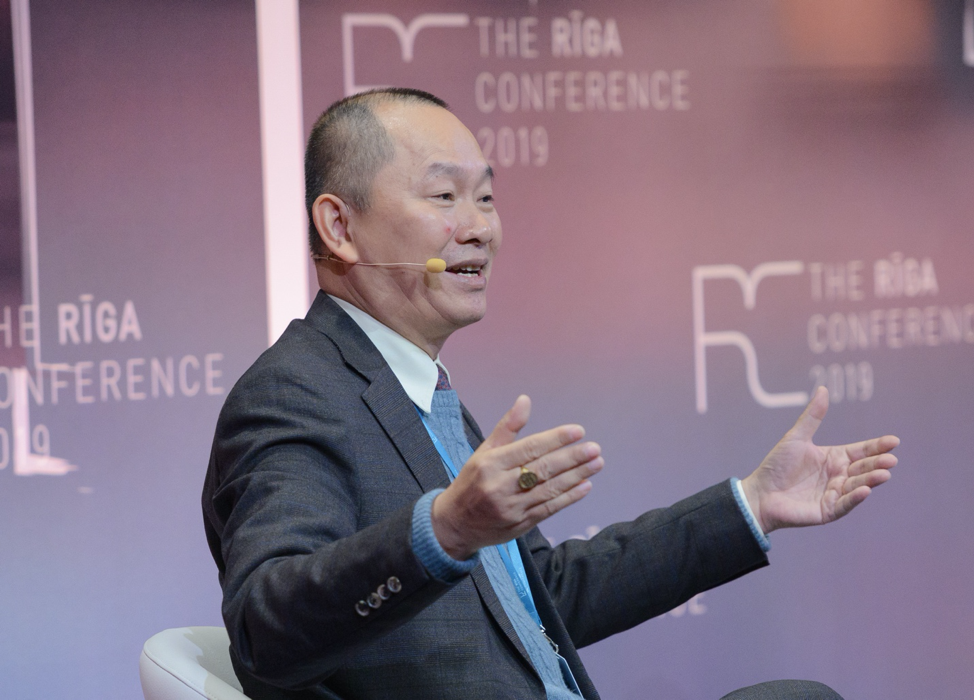
by Admin | Oct 9, 2020 | Chronicles
Nguyen Anh Tuan, CEO of the Boston Global Forum, was a speaker at the Riga Conference 2019 at the Plenary Session “Political Power in the Digital Age”. Mr. Tuan introduced the AIWS Social Contract 2020. This was after the AIWS Conference at Harvard University Faculty Club, September 23, 2019, discussing the concepts of the AIWS Social Contract 2020, the previous name given to the Social Contract for the AI Age. This was the first international conference outside the United States that the Social Contract for the AI Age was introduced.
Leaders such as Speaker of Sweden Parliament, Prime Minister of Ukraine, Minister of Defense of Germany, President and Prime Minister of Latvia, and global distinguished thinkers, spoke at The Riga Conference 2019.
Here are pictures from Mr. Nguyen Anh Tuan’s presentation of the Social Contract for the AI Age at the Riga Conference 2019:
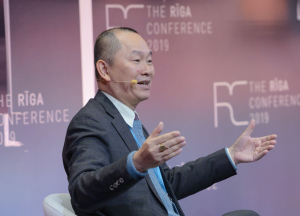
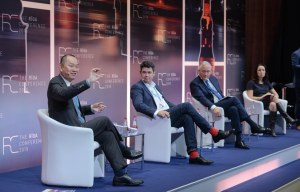
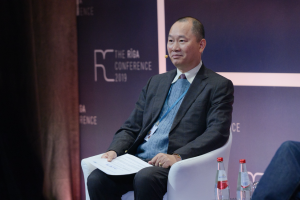
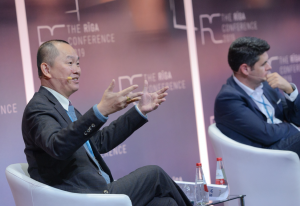
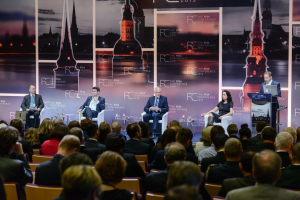
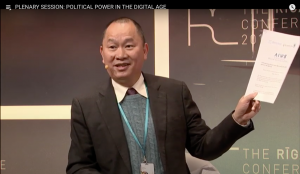
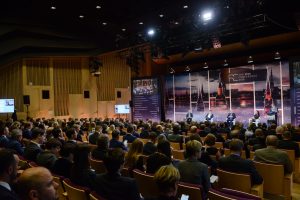
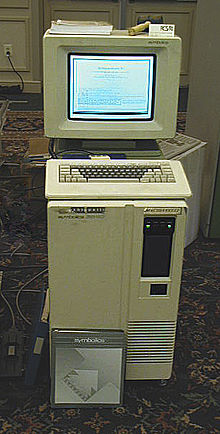
by Admin | Oct 23, 2020 | Chronicles, News
This week in The History of AI at AIWS.net – the sudden collapse of the market for specialised AI hardware in 1987. This is due to the fact that computers from Apple and IBM became more powerful than Lisp machines and other expert systems. In the 80s, specialised AI hardware such as Lisp machines became very popular due to its effectiveness in the corporate world. However they were expensive to maintain. By the end of the decade, computers by Apple and IBM had catched up with expert systems, per Moore’s Law, and also at a far cheaper price. Because now consumers no longer require the more expensive expert systems, there was a collapse for the market of such things.
This collapse of the market led to what is dubbed the Second AI Winter. The collapse coincided with the end of the 5th Generation Computer project of Japan and the Strategic Computing Initiative in the USA. The expensive nature of expert systems and the lack of demand led to slowdowns in development of that field. Companies that run Lisp went bankrupt or moved away from the field entirely. Thus, the winter spelled the end for expert systems as a major player in AI and computers.
Expert systems are computer systems that can emulate man’s decision-making abilities. They are designed to solve problems through reasoning adn they can perform at the level of human experts. The first expert system was SAINT, developed by Marvin Minsky and James Robert Slagle. Lisp machines are designed to be able to run expert systems. Lisp machine runs the Lisp programming language, and in a way, it was one of the first commercial and personal workstation computer.
The fall of expert systems highlight lessons that are valuable for the History of AI and the current development of AI as well. It shows the failure to adapt by many in the AI field. The end of expert system in popular usage and the beginnings of the Second AI winter are also important milestones in the development of Artificial Intelligence. Thus, the HAI initiative considers this event an important marker in the history of AI.
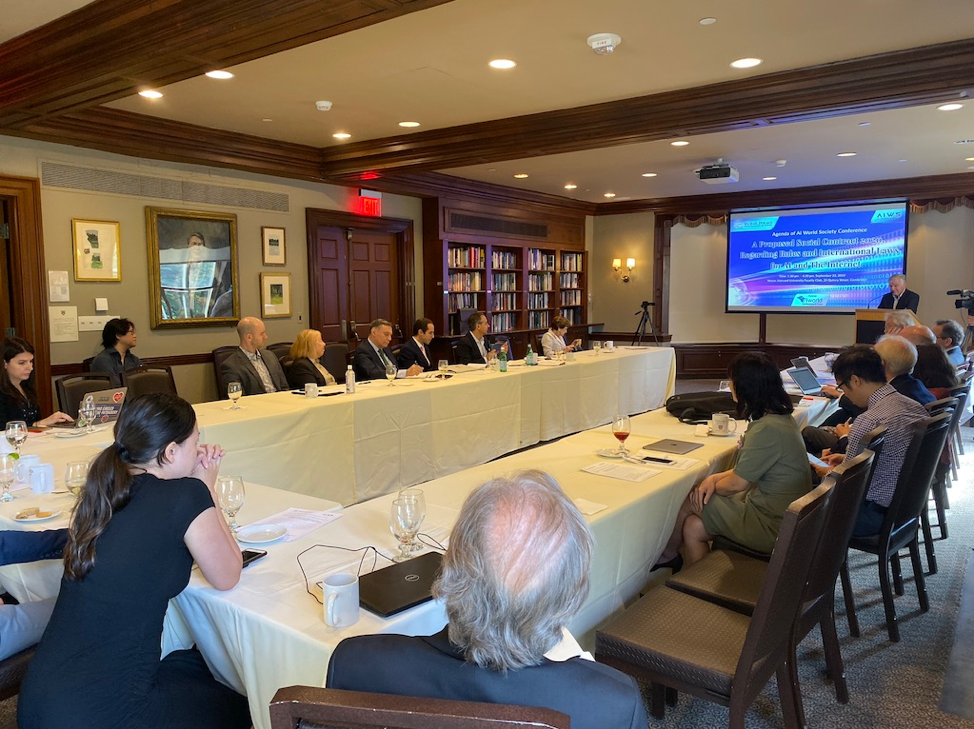
by Admin | Oct 3, 2020 | Chronicles
The Social Contract for the AI Age was officially launched and discussed at World Leadership Alliance-Club de Madrid Policy Lab “Transatlantic Approaches: A New Social Contract in the Age of AI” during September 16-18, 2020, with the attendance of presidents, prime ministers, distinguished thinkers, policymakers, and senior officials.
Starting this week, AIWS.net will introduce historical conferences of the Social Contract for the AI Age.
In this AIWS Weekly, we introduce the first conference of Social Contract for the AI Age.
On September 23, 2019, at the Harvard University Faculty Club, Boston Global Forum organized the AIWS conference “A Proposed Social Contract 2020, Regarding Rules and International Laws for AI and the Internet”
Agenda and Speakers:
Opening Remarks Governor Michael Dukakis, Chairman of Boston Global Forum
Concepts of the Social Contract 2020 Professor Alex ‘Sandy’ Pentland, MIT
Solutions for AI Transparency: Professor Christo Wilson, Northeastern University,
Rules and International Laws of AI World Society
Mr. Paul Nemitz, Principal Adviser, Directorate General for Justice and Consumers, the European Commission
Mr. Michel Servoz, Special Adviser to the President of the European Commission
Mr. Nam Pham, Assistant Secretary for Business Development & International Trade, State of Massachusetts
Participants:
Prof. Nazli Choucri, MIT
Ms. Kitty Dukakis, First Lady of Massachusetts
Prof. Thomas Patterson, Harvard Kennedy School
Prof. David Silbersweig, Harvard Medical School
Mr. Nguyen Anh Tuan, the Boston Global Forum,
Prof. Thomas Creely, U.S. Naval War College
Mr. Allan Cytryn, Former CTO, Goldman Sachs,
Prof. Hiroshi ESAKI, the University of Tokyo
Prof. Rosabeth Kanter, Harvard Business School
Ms. Rebecca Leeper, Computer Ethics and Data Policy Advocator
Mr. Jamil Mahuah, Former President of Ecuador, Visiting Faculty, Harvard Kennedy School
Mr. Barry Nolan, Senior Advisor of Joint Economic Committee, U.S. Congressional
Ms. Elizabeth Renieris, Berkman Klein Center Fellow, Harvard
Mr. Jeff Saviano, EY Global Tax Innovation Leader, MIT Connection Science Fellow
Mr. Thomas Vallely, Founder of the Fulbright University, Director of Vietnam Program at Harvard
In the conference, speakers and participants discuss concepts from the Social Contract 2020. The original name of the Social Contract for the AI Age is the AIWS Social Contract 2020. Mr. Nguyen Anh Tuan would go on and speak about the AIWS Social Contract 2020 at the Riga Conference 2019, 11-12 October 2019 in Riga, Latvia.
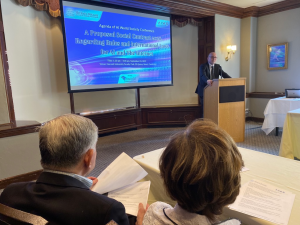
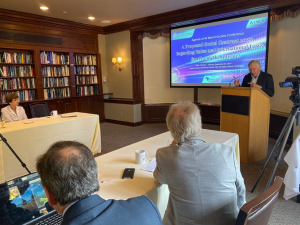
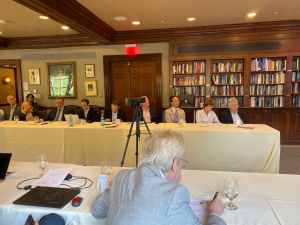
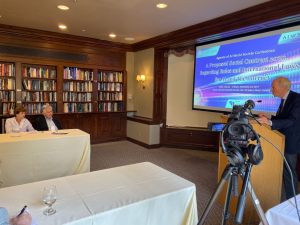
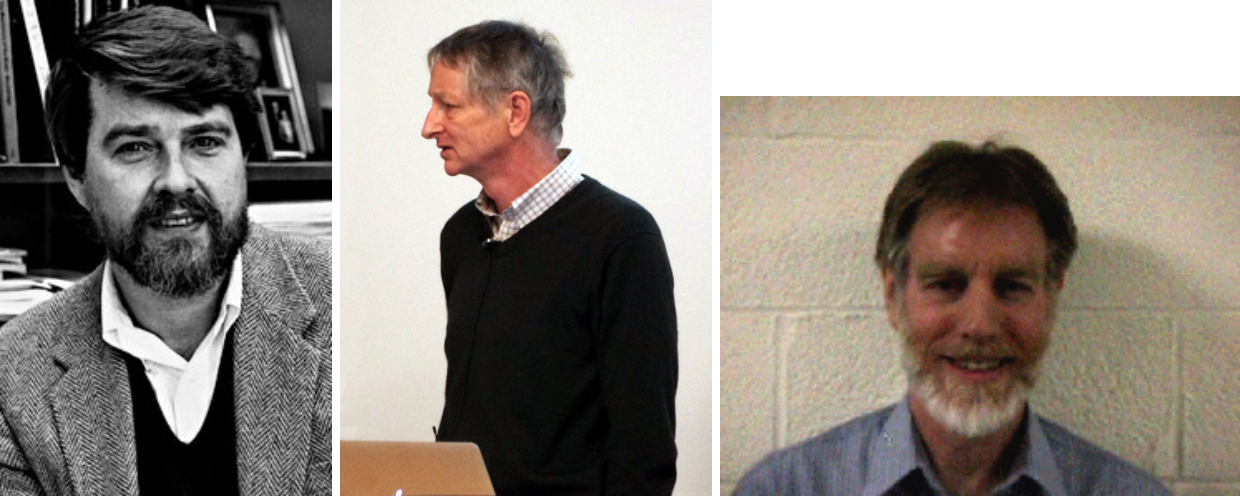
by Admin | Oct 16, 2020 | Chronicles, News
This week in The History of AI at AIWS.net – David Rumelhart, Geoffrey Hinton, and Ronald Williams published “Learning representations by back-propagating errors” in October 1986. In this paper, they describe “a new learning procedure, back-propagation, for networks of neurone-like units.” The term backpropagation was introduced in this paper, and the concept of it was also introduced to neural networks. The paper can be found here.
David E. Rumelhart was an American psychologist. He is notable for his contributions to the study of human cognition, in terms of mathematical psychology, symbolic artificial intelligence, and connectionism. At the time of publication of the paper (1986), he was a Professor at the Department of Psychology at University of California, San Diego. In 1987, he then moved to Stanford, becoming Professor there until 1998. Rumelhart also received the MacArthur Fellowship in 1987, and was elected to the National Academy of Sciences in 1991.
Geoffrey Hinton is an English-Canadian cognitive psychologist and computer scientist. He is most notable for his work on neural networks. He is also known for his work into Deep Learning. Hinton, along with Yoshua Bengio and Yann LeCun (who was a postdoctorate student of Hinton), are considered the “Fathers of Deep Learning”. They were awarded the 2018 ACM Turing Award, considered the Nobel Prize of Computer Science, for their work on deep learning.
Ronald Williams is a computer scientist and a pioneer into neural networks. He is a Professor of Computer Science at Northeastern University. He was an author on the paper “Learning representations by back-propagating errors”, and he also made contributions to recurrent neural networks and reinforcement learning.
The History of AI Initiative considers this paper important because it introduces backpropagandation. Furthermore, the paper created a boom in research into neural network, a component of AI. Geoffrey Hinton, one of the authors of the paper, would also go on and play an important role in Deep Learning, which is a field of Machine Learning, part of Artificial Intelligence.
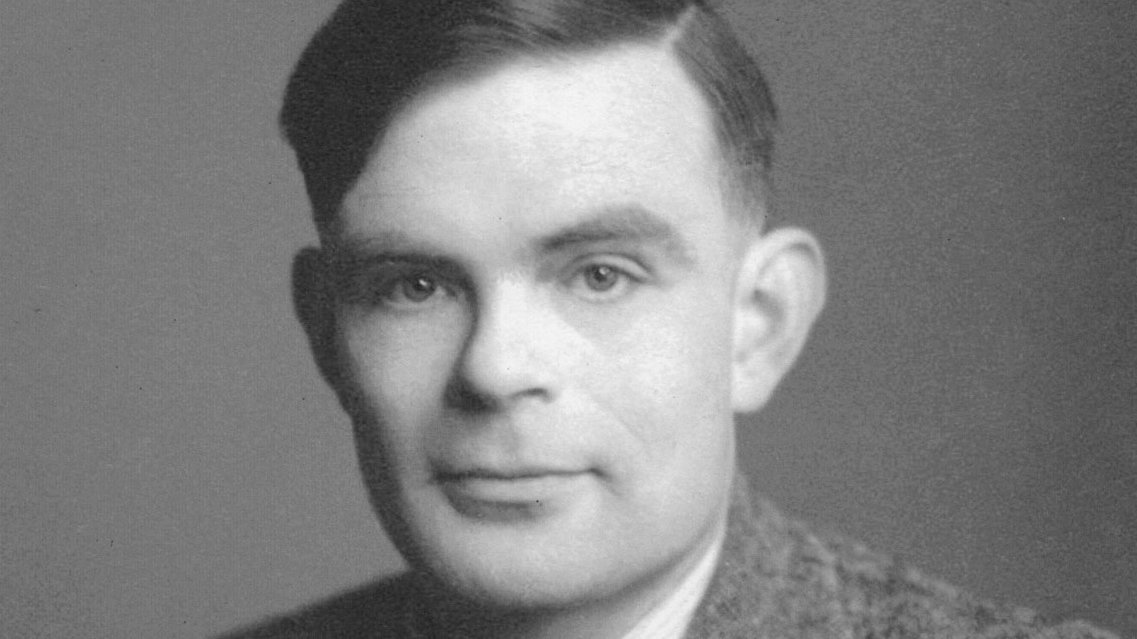
by Admin | Oct 9, 2020 | Chronicles, News
This week in The History of AI at AIWS.net – “Computing Machinery and Intelligence” by Alan Turing was published in the Mind quarterly academic journal in October 1950. It was the first instance that the “Turing test” was introduced to the public. The paper takes the question “Can machines think” and breaks it down. The paper also addresses 9 objections and arguments against Artificial Intelligence – Religious, “Heads in the Sands”, Mathematical, etc. Turing wrote about a potential “Learning Machine” that could successfully bypass the Turing test.
The Turing test, also known as the Imitation game, can be used to tell machines from humans. It poses a hypothetical, where a human evaluator would judge conversations between a machine designed for human-like responses and a human; if the evaluator cannot identify the machine from the human, then the machine passed the test. The test has proven to be both influential and controversial.
Alan Turing was a British computer scientist and cryptanalyst. He developed the Turing machine, a model of a general-purpose computer, in 1936. During the Second World War, he worked at Bletchley Park (Government Code and Cyper School) as a codebreaker for the United Kingdom. At his time here, he would play a critical role in solving Enigma, Germany’s wartime infamous encryption system. Solving Enigma helped turning the tide of the war in favour of the Allies. After the war, he would go on to develop the Turing test in 1950. Alan Turing is widely considered the father of modern Artificial Intelligence, as well as being highly influential in theoretical computer science. The “Nobel Prize of Computing”, the ACM Turing Award, is named after him.
The History of AI initiative considers this event to be important due to “Computing Machinery and Intelligence” being a seminal paper in regards to both Computer Science and AI. The paper introduces many new concepts in CS and AI to the general public. Alan Turing is a pivotal figure in the development of Artificial Intelligence, computing, and machine learning as well. Thus, the publication of this paper is a critical moment in the History of AI.
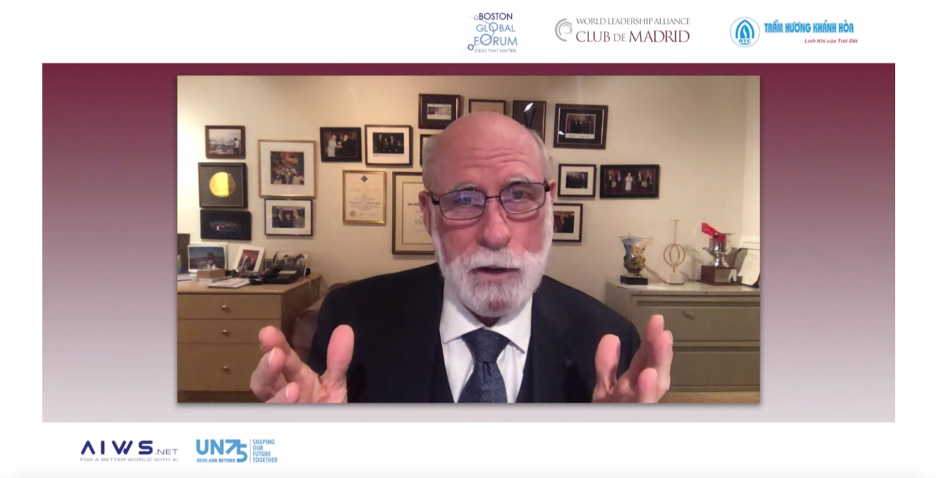
by Admin | Sep 19, 2020 | Chronicles
On September 17 at Session I: The AIWS Social Contract 2020 and AIWS Innovation Network: A Platform for Transatlantic Cooperation, the Lead Speaker and Facilitator was Nazli Choucri, Boston Global Forum Board Member and Professor of Political Science at the Massachusetts Institute of Technology (MIT)
Panel discussion:
- Esko Aho, WLA-CdM Member, Prime Minister of Finland (1991-1995)
- Vaira Vike-Freiberga, WLA-CdM Member, President of Latvia (1999-2007)
- Vint Cerf, Father of the Internet, Chief Internet Evangelist, Google
- Nguyen Anh Tuan, CEO of the Boston Global Forum, “Presentation AIWS City, a practicing of The Social Contract 2020, A New Social Contract in the Age of AI”
The panel discussed the Social Contract for the AI Age and AIWS City. In this session participants are President Vaira Vike-Freiberga, Vint Cerf, both World Leader in AIWS Award recipients, Professor Nazli Choucri, MIT, Board Member of the Boston Global Forum, Michael Dukakis Institute, History of AI at AIWS.net, Mr. Nguyen Anh Tuan, CEO of the Boston Global Forum. Professor Choucri is lead speaker and moderator of this session. She talked about the Social Contract for the AI Age, and Mr. Tuan introduced new concepts found in the Social Contract for the AI Age such as Intellectual Society and Smart Democracy, as well as the model of AIWS City.
Link: https://boston.dialoguescdm.org/on-demand/#02
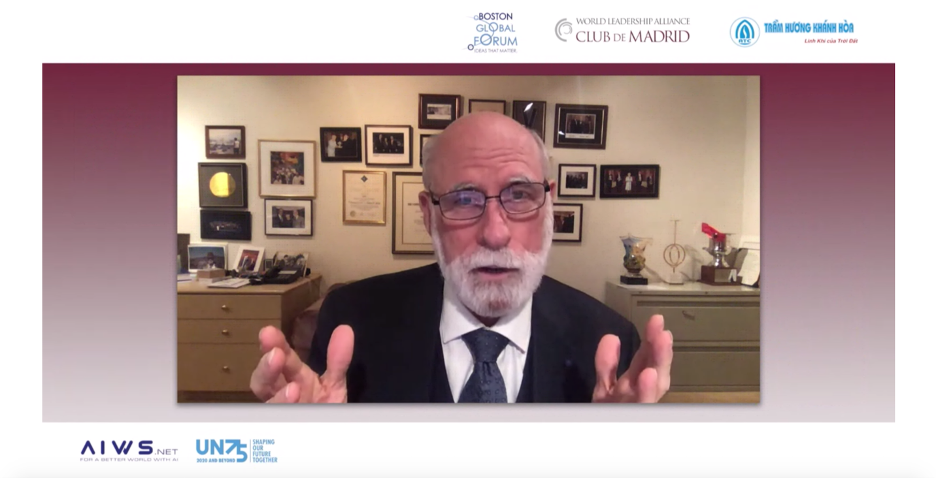
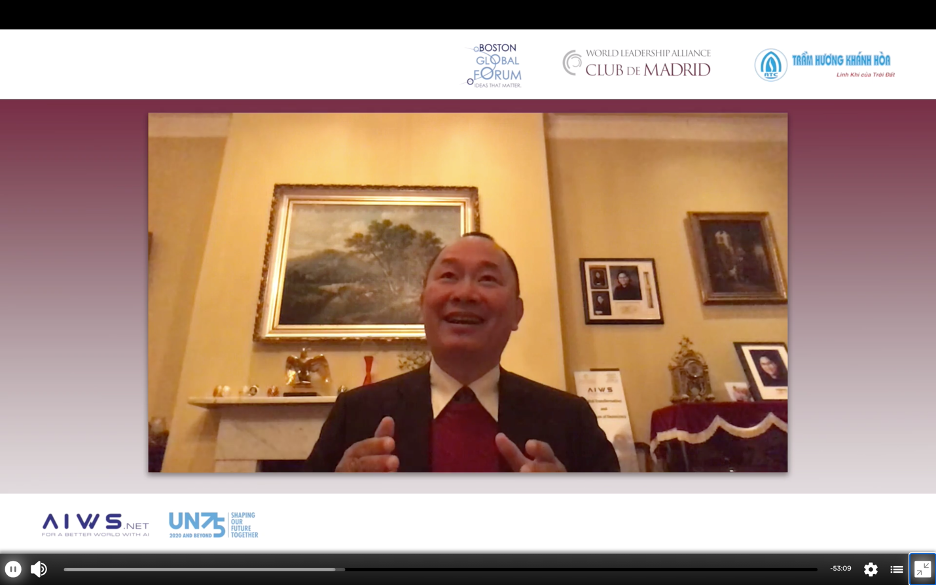
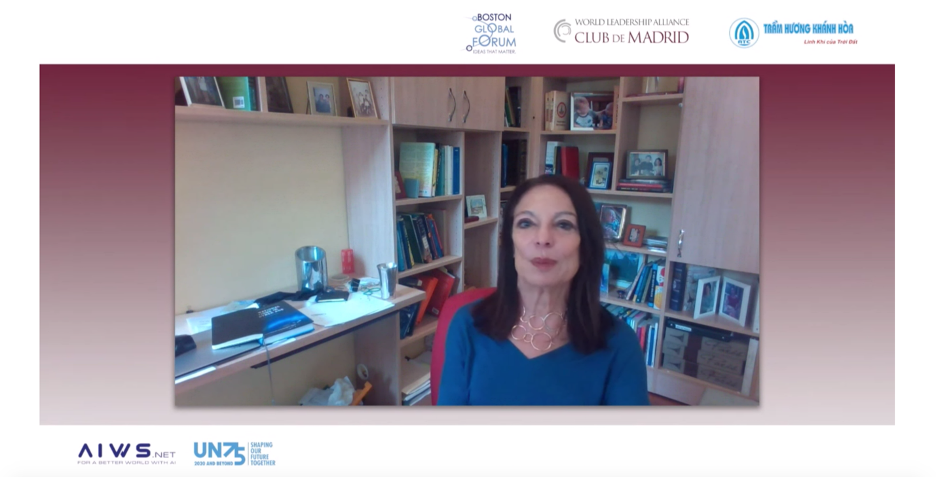
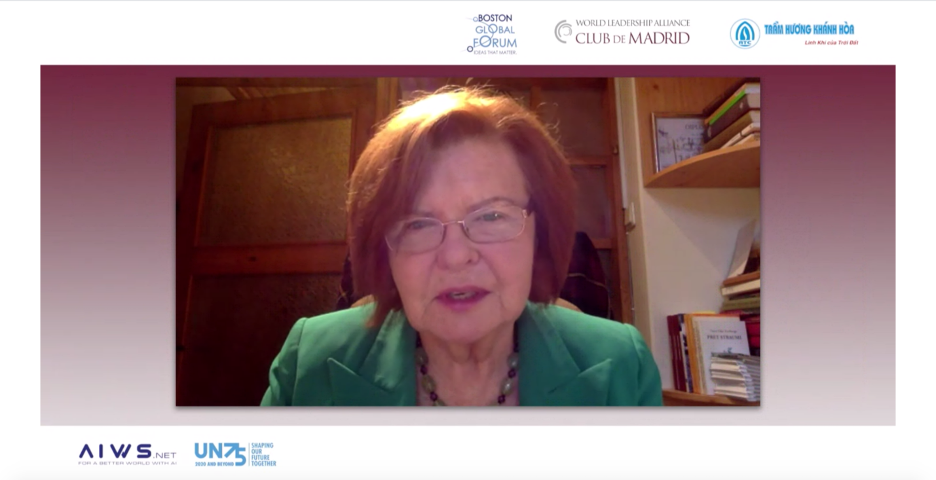
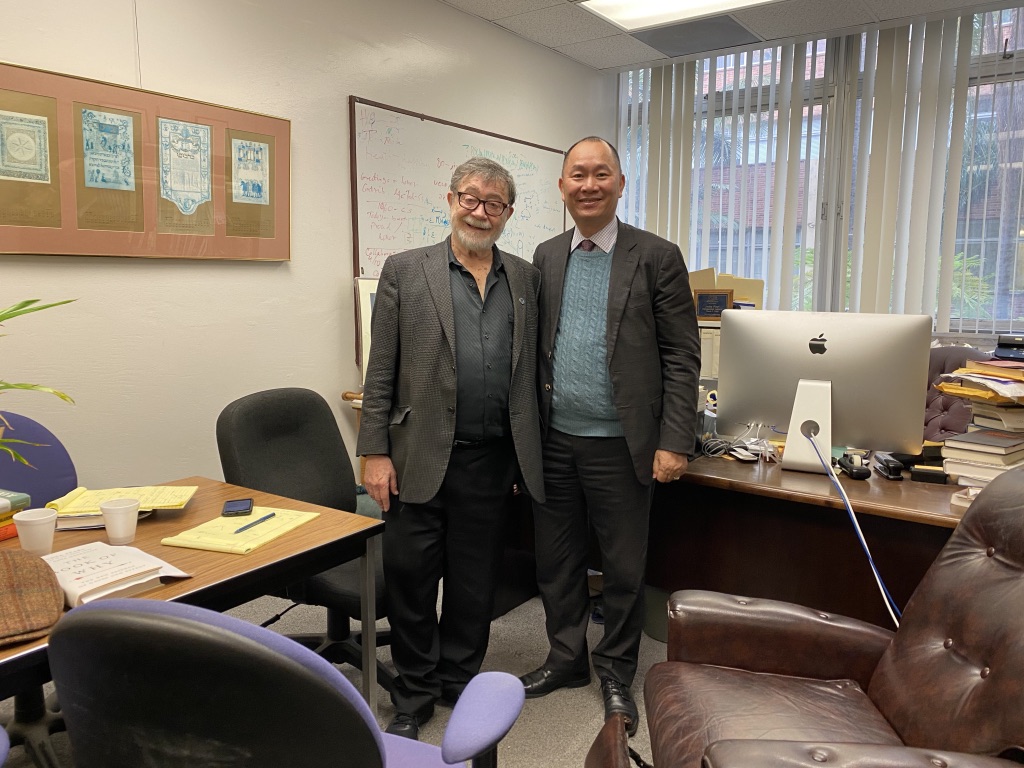
by Admin | Oct 2, 2020 | Chronicles, News
This week in The History of AI at AIWS.net – computer scientist Judea Pearl published Probabilistic Reasoning in Intelligent Systems in 1988. The book is, according to the publisher, about “the theoretical foundations and computational methods that underlie plausible reasoning under uncertainty.” The book covers topics such as AI systems, Markov and Baynesian networks, network propagation, and more. The Association for Computing Machinery (ACM) hailed the book as “[o]ne of the most cited works in the history of computer science” and that it “initiated the modern era in AI and converted many researchers who had previously worked in the logical and neural-network communities.”
1988 falls under the end of the second boom of AI, with the promotion of the Strategic Computing Initiative, Japan’s Fifth Generation, and other counterparts from other countries. The bust that followed it, known as the Second AI winter, lasted from the late 1980s to 1993. This bust was due to the perceptions of governments and investors, who believed that the field was failing, despite the fact that advances were still made.
Judea Pearl is a renowned Israeli-American computer scientist. He is a pioneer into Baynesian networks, probabilistic approaches to AI, and causal inference. He is also known for his other books, Causality: Models, Reasoning, and Inference (2000) and The Book of Why: The New Science of Cause and Effect (2018). Professor Pearl won the Turing Award, one of the highest honours in the field of computer science, in 2011, for his works into AI through probabilistic and causal reasoning. He is a Chancellor’s Professor at UCLA.
Probabilistic Reasoning in Intelligent Systems (1988) can be accessed through the ACM digital library, which also has other resources on computer science and AI.
Due to the impact that the book has, the History of AI initiative considers it an important marker in AI history. Professor Judea Pearl is one of the most influential computer scientists around the world. He is a Mentor of AI World Society Innovation Network (AIWS.net). Professor Pearl resides on the History of AI Board. He was honored as 2020 World Leader in AI World Society by Michael Dukakis Institute and the Boston Global Forum.
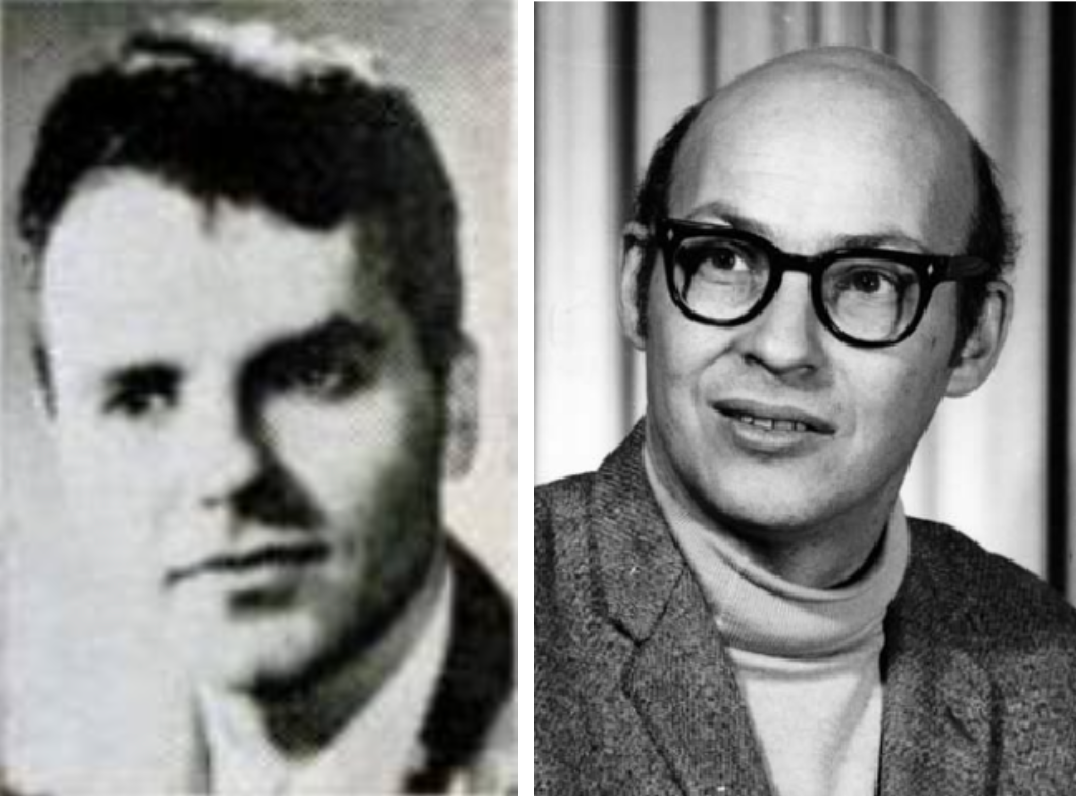
by Admin | Sep 25, 2020 | Chronicles, News
This week in The History of AI at AIWS.net – computer scientist James Robert Slagle developed SAINT in 1961. SAINT stands for Symbolic Automatic INTegrator. It was a heuristic program that could solve symbolic integration problems in freshman calculus. The machine was developed as a part of Slagle’s dissertation at MIT, with Marvin Minsky’s help. SAINT is considered the the first expert system. An expert system is a system that performs at the level of a human expert. SAINT was also one of the first projects that tried to produce a program that can come close to surpassing the Turing test as well.
James Robert Slagle is an American computer scientist. He worked on SAINT for his dissertation at MIT with Marvin Minsky. Slagle would receive his PhD in Mathematics from MIT later on in 1961. He’s a Professor in Computer Science with appointments in universities such as MIT, Johns Hopkins, UC Berkeley, and University of Minnesota.
Marvin Minsky also played a role in this project, as Slagle worked with him for this section of his dissertation. He would go on to be an important pioneer in the field of AI. He penned the research proposal for the Dartmouth Conference, which coined the term “Artificial Intelligence”, and he was a participant in it when it was hosted the next summer. Minsky would also co-founded the MIT AI labs, which went through different names, and the MIT Media Laboratory. In terms of popular culture, he was an adviser to Stanley Kubrick’s acclaimed movie 2001: A Space Odyssey. Minsky won the Turing Award in 1969.
The full dissertation can be found here. This project and dissertation is special in regard to AI, due to it being another step in its development, most notably for being the first expert system. Albeit it was only a minor project, the HAI initiative regards it as another pioneering attempt in the History of AI.
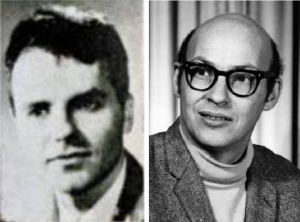
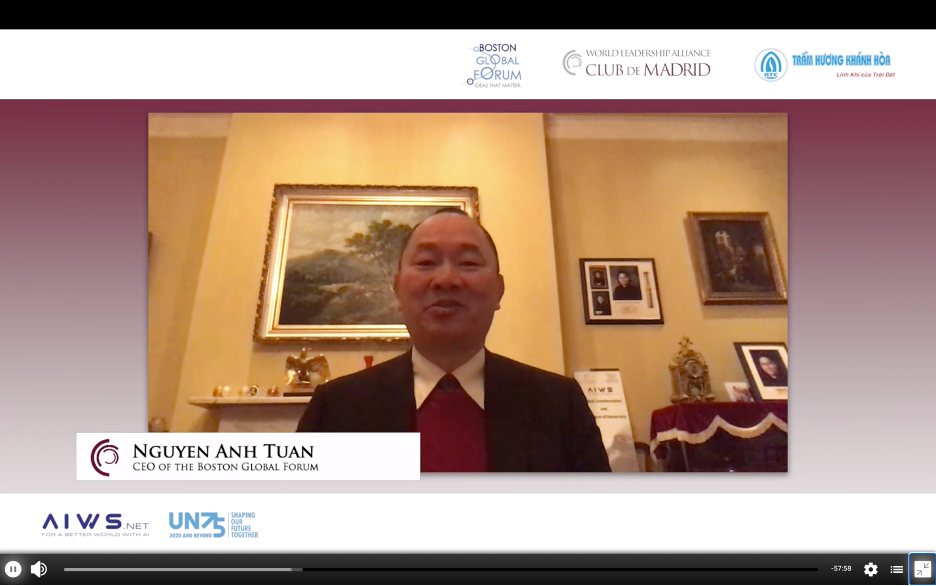
by Admin | Sep 19, 2020 | News
On September 17, at Session I of this event, Mr. Nguyen Anh Tuan, CEO of the Boston Global Forum, Co-Author of Social Contract for the AI Age, introduced the model of AI World Society City (AIWS City). AIWS City as a method of practicing the Social Contract for the AI Age.
The AIWS City is an all-digital virtual city based on trusted open data, that applies the standards of “Social Contract for the AI Age”, “People Centered Economy”, “Trustworthy Economy”, “Intellectual Society, a thoughtful civil society”, and “AI-Government”.
- The AIWS City can assist citizens to become more thoughtful by enhancing knowledge, critical thinking and social responsibility
- AIWS creates the concept of AIWS Value. AIWS Value: traditional value (products, services, data, innovation, creativities, etc.) + social values (contributions). Recognize and exchange traditional and social values.
- The AIWS City will operate based on AIWS Value in order to create a good Ecosystem of the People Centered Economy – “all people can create value for each other”.
- Slogan: “People Centered AI andInternet Ecosystem for Work and Life”.
- The AIWS City Board of Leaders are: Governor Michael Dukakis, Chairman of the Boston Global Forum, Nguyen Anh Tuan, CEO of The Boston Global Forum, Professor Alex Pentland, MIT, Vint Cerf, Father of the Internet, Chief Internet Evangelist of Google, Professor Zlatko Lagumdzija, Former Prime Minister of Bosnia and Herzegovina, Professor Nazli Choucri, MIT, Professor David Silbersweig, Harvard University, Professor Thomas Patterson, Harvard University, Marc Rotenberg, Director of Center for AI and Digital Policy at Michael Dukakis Institute.
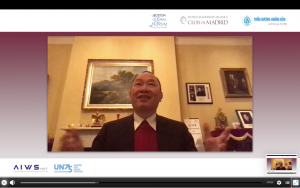
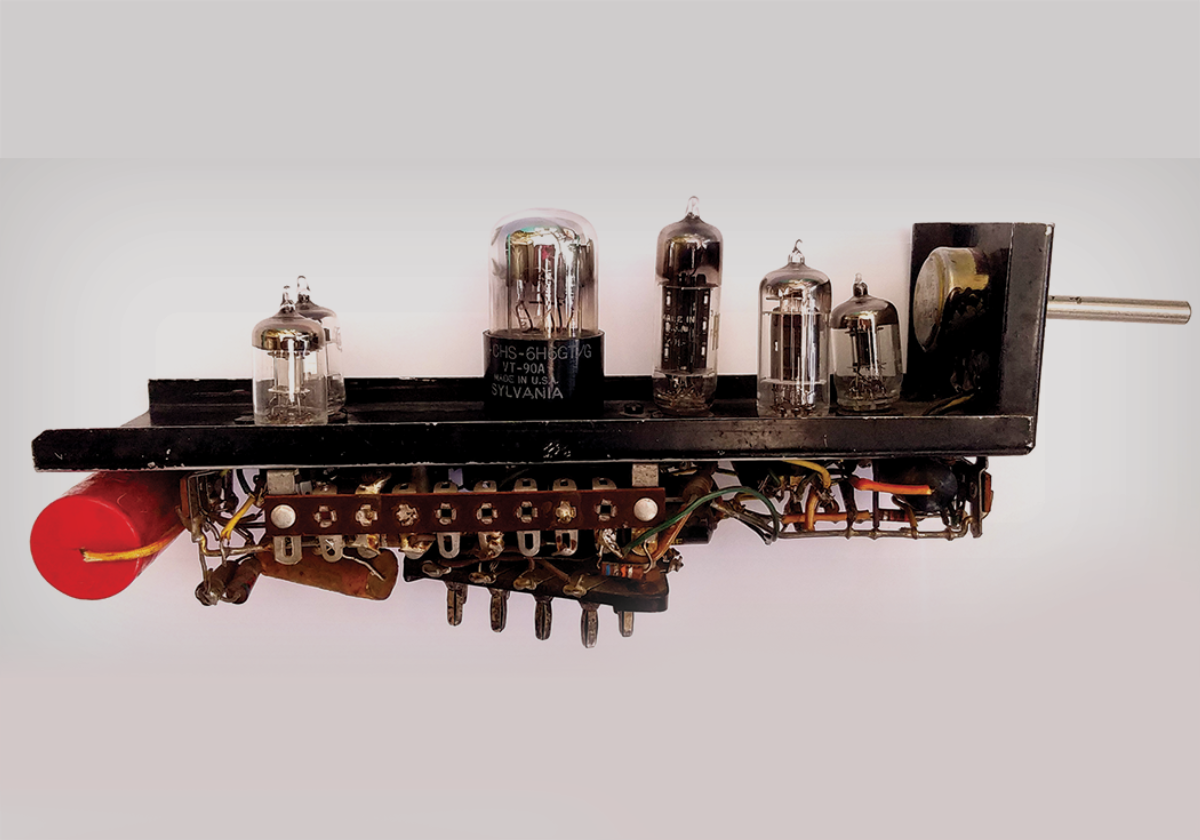
by Admin | Sep 18, 2020 | Chronicles, News
This week in The History of AI at AIWS.net – Marvin Minsky and Dean Edmonds built SNARC, the first artificial neural network, in 1951. SNARC stands for the Stochastic Neural Analog Reinforcement Calculator. It is a neural net machine, which itself is a randomly connected network of 40 Hebbs synapses. The idea to develop the machine was from a letter by Minsky to George Armitage Miller, who then got funding from the Air Force Office of Scientific Research. Dean Edmonds volunteered to help, as he was good with electronics.
Marvin Minsky was a graduate student in mathematics at Princeton at the time of this project. He would go on to be an important pioneer in the field of AI. He penned the research proposal for the Dartmouth Conference, which coined the term “Artificial Intelligence”, and he was a participant in it when it was hosted the next summer. Minsky would also co-founded the MIT AI labs, which went through different names, and the MIT Media Laboratory. In terms of popular culture, he was an adviser to Stanley Kubrick’s acclaimed movie 2001: A Space Odyssey. He won the Turing Award in 1969.
Dean Edmonds was a graduate student in physics at Princeton at the time of the project. Although there is not many information about him, he wrote a short piece about his time around academia, which also details his contacts with Minsky and SNARC. George Armitage Miller, who helped get funding for the project from the Air Force, was an American psychologist. He was a pioneer in the field of cognitive psychology and cognitive science.
This project is important to the History of AI as SNARC machine was one of the first experiments in the Artifical Intelligence. Furthermore, Marvin Minsky would become one of the founders of AI. HAI considers this an eventful project in the early development of AI.


























